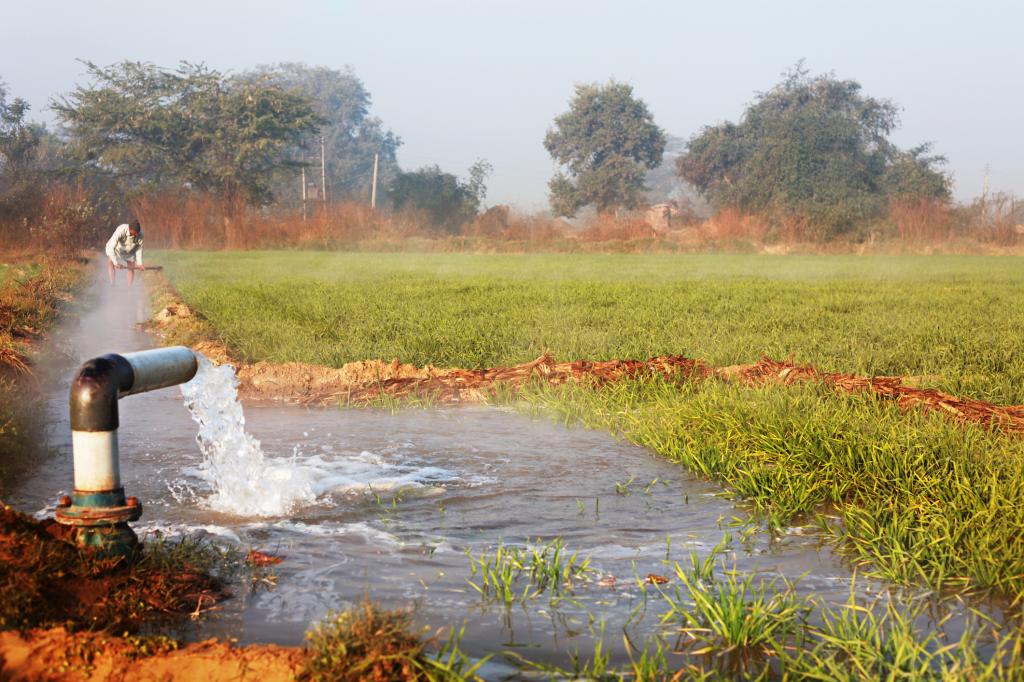Since India depends heavily on agriculture, Irrigation systems in India is essential to the nation. India is a large nation with a very diverse geography, climate, and flora. Rainfall is often erratic in both its frequency and quantity. As a result, there is a great deal of unequal distribution of water throughout India. In this nation, the majority of the rainfall occurs during four months out of the year when there is an abundance of water that runs off without being used, while there is a severe lack of water in other seasons.
This nation has around 185 million hectares of cultivable land. Approximately 172 million hectares are farmed at the moment. Since agriculture directly supports 70% of India’s enormous population, it has always been and is expected to continue to be the country’s primary sector for the foreseeable future.
India is well suited for the development of irrigation due to its abundant water supplies, magnificent river systems, and enormous, parched landmasses. India has some of the oldest irrigation systems because of this.
Even if all of the resources are used, irrigation facilities might be increased to 115 million hectares, of which 80 million hectares would come from surface water and 35 million hectares from subsurface water. It is projected that during the next 20 years, the gross cultivated area would increase to almost 200 million hectares due to the adoption of multiple cropping and land reclamation.
India uses a wide range of irrigation system types.
A list of a few of the systems is provided below:
1. well-water-using irrigation system
Among other states, there are several wells in Tamil Nadu, Bihar, and Uttar Pradesh. Wells come in several varieties, such as deep wells, shallow wells, tube wells, and artesian wells. Since the dry season lowers the water table, water from shallow wells is not always available.
Since a deep well contains water at all times of the day, it is preferable. A surface well can only irrigate 1/2 hectare, but a deep tube well may cover an area of almost 400 hectares when driven by electricity.
Tube-wells are not just used for irrigation. It is feasible to install and operate tube wells in close proximity to agricultural regions that have readily available ground water.
The majority of states that use tube wells include Gujarat, Uttar Pradesh, Haryana, Punjab, and Bihar. Nowadays, artesian wells in Rajasthan and Maharashtra provide water to agricultural lands. Artesian wells naturally experience high pressure, which keeps the water level high.
2. water reservoir irrigation system
In the areas around Hyderabad, constructions are built over sources of water to create water reservoirs. These kind of structures are known as dams. This technique has been widely adopted by the States of Tamil Nadu, Andhra Pradesh, Karnataka, etc.
Even in Northern India, reservoirs are constructed for the purpose of storing water. Each of these reservoirs provides water that is sent to the fields via canals.
Many places have installed rainwater collecting systems, and the water they gather is stored in large artificial reservoirs for use in farming.
3. canal-based irrigation system
Canal irrigation is vital to Indian agriculture. It accounts for over 42% of the land that is irrigated. Several places experience river flooding during the rainy season. Floodwater is transported to the field by canals. In W.B., Bihar, Orissa, and other locations, there are waterways. Since they only provide water during river floods, they are worthless during the dry season, when water is most required.
The Ravi, Beas, and Sirhind (from the Sutlej) canals are connected by the well-known upper Bari Doab canal in Punjab. In Uttar Pradesh, the Sarda and Agra canals, together with the Lower and Upper Ganga canals, have great importance. In Tamil Nadu, the Buckingham and Periyar canals are the most important.
4. River Valley initiatives with a variety of goals
In recent years, multipurpose river valley projects have proven advantageous for expanding agriculture and irrigation. The following are the most important projects in the river valley:
- The Damodar Valley project in West Bengal, 2. The Mor (Mayurakshi) Project in West Bengal, 3. The Mahanadi (Hirakud) Project in Orissa, 4. The Koshi Project in Bihar, 5. The Bhakra Nangal Project in Punjab







